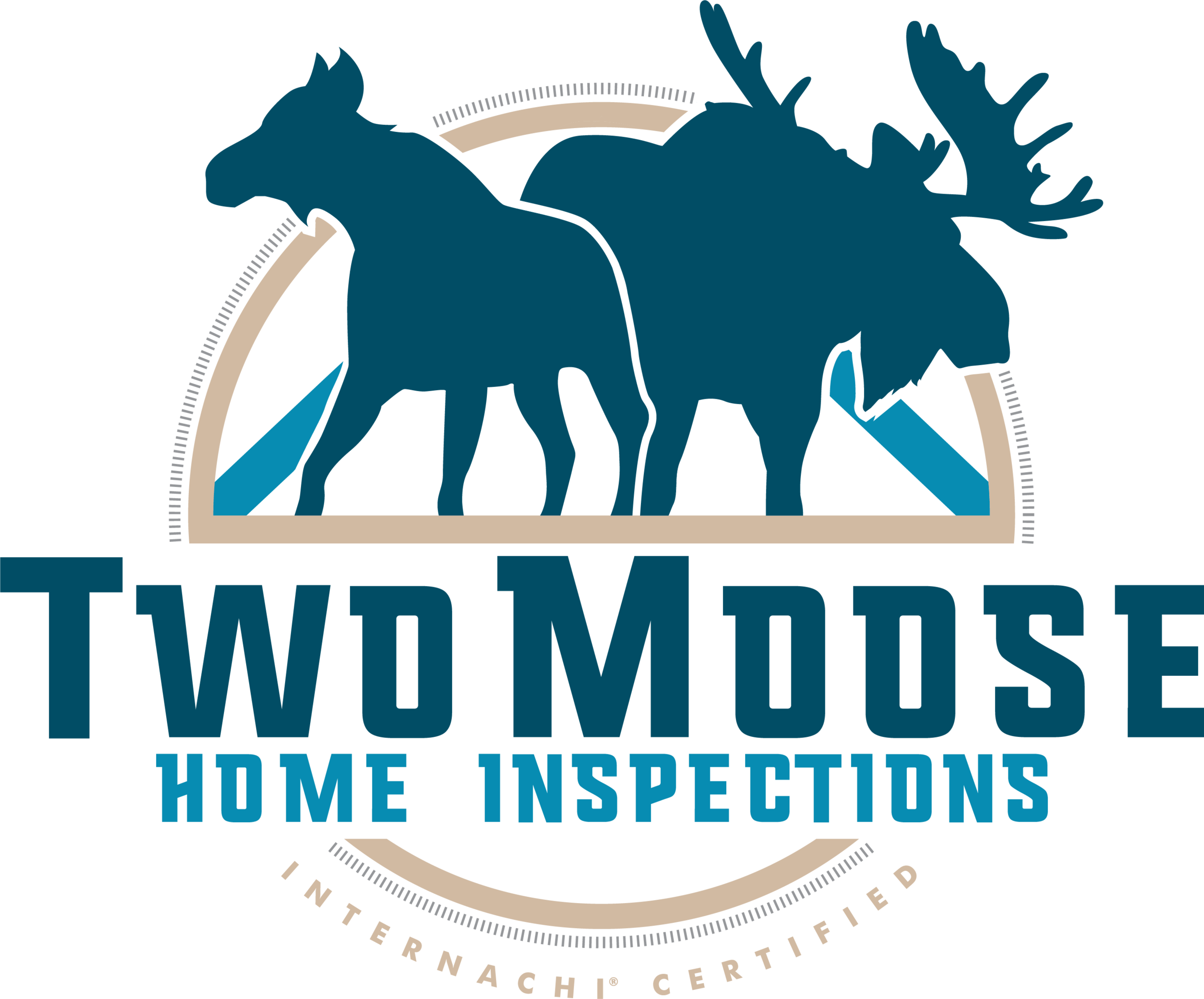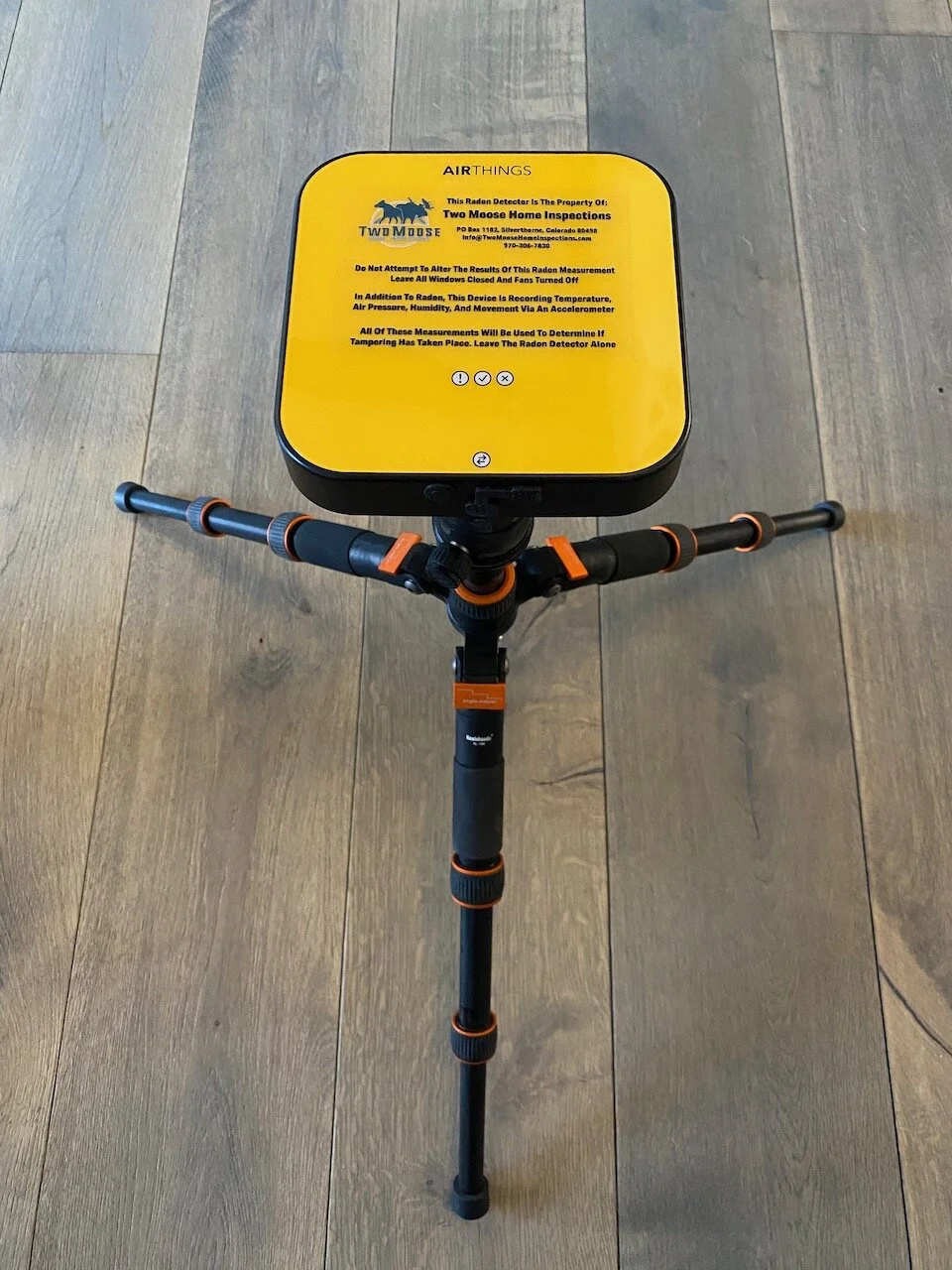Radon Testing
Radon Testing
Two Moose Home Inspections offers radon testing as an add-on service. Radon exists everywhere and it frequently accumulates inside our homes to dangerous levels. Radon is not something that homes were tested for until the late 1980’s and radon testing was too cost prohibitive to be done regularly until very recently.
In the High Rockies we are categorized at a Zone 1 which means that we have the highest risk of accumulating dangerous levels of radon in our homes and for that reason, almost every home in our area needs some type of radon mitigation. Children are at the greatest risk because their lungs are growing so rapidly and there is no such thing as a safe level of radon. Radon causes lung cancer at a rate second only to smoking tobacco which makes it a very dangerous to have in the house.
Regardless of radon mitigation being installed or not, 58% of all homes that we measure for radon are above the EPA Action level of 4.0 pCi/L and 70% of all homes at we measure are above 2.7 pCi/L which is outlined as the upper limit by the World Health Organization. Every inspector at Two Moose Home Inspections is Licensed with the Colorado Department of Regulatory Agencies as a Radon Measurement Professional.
Does My House Need A Radon Test
Every house should be tested for radon, but not every purchase of a house can financially benefit from a radon test. Single family home sales can often be negotiated to have radon mitigation systems installed or a credit given for the installation of a radon mitigation system. Townhomes and Condominiums are often managed by a Homeowner Association (HOA) which means that any repairs will be coming out of the treasury for the HOA and not directly lower the price of the sale.
Although a radon test may not benefit you financially, it is always beneficial to learn if mitigation is needed and if the HOA has enough money to cover the repair. If your condominium is on the ground floor you should definitely test for radon, but if your condominium is on the second floor or above, the radon gas will have dissipated significantly before it gets to your unit so a test may not be necessary.
Radon is an unstable element an it will radioactively decay until it reaches stability as lead. There is a uranium layer deep under the surface of the earth which is radioactive and will decay into radon at which point the radon will enter our homes and can become very dangerous for us. This is why every home should be tested for radon.
How Much Does A Repair Cost
Repairs range in our area from $1,500 to about $3,000 or a little more depending on the complexity of the foundation and the size of the house. This repair works by creating an area of low pressure under the house which coaxes the radon to move towards the exhaust pipe instead of the interior of the house.
This can be achieved by sealing your crawlspace floor with plastic and using a special type of exhaust fan to create a vacuum. Finished basements may require a hole to be dug under the foundation to allow for a pipe to be installed that can then draw air from under the concrete slab and exhaust radon to the exterior. These installations are labor intensive and must be done to exacting standards to properly and efficiently mitigate the radon levels in your house.
What Could Go Wrong
If your house has high levels of radon you and the occupants of the house are at risk. Radon causes lung cancer at a rate only second to smoking tobacco. These health effects may not be realized until decades after living at the house, but by the time the symptoms present themselves, there is nothing that can be done to reverse the damage. For this reason, if radon levels are high, they must be mitigated because there is no such thing as a safe level of radon.
Children are at a much greater risk and if children are living in the house a radon test should be performed. Since children are growing so quickly any damage to their lungs can be significantly more severe and damaging than that of an adult exposed to the same levels of radon.
Aside from your personal health, If a radon test is not performed and the house is later sold, the buyer may perform a radon test and the cost of installing a radon mitigation system may become your responsibility.
What’s the Next Step
Once the radon test has been completed it is important to understand the results. There are many things that can affect the level of radon from atmospheric changes to physical tampering of the device. Our radon detectors are calibrated annually and measure; movement, humidity, temperature, barometric pressure, and radon. Using this data, we can have a strong confidence in the findings.
The unit of measure for radon levels is picocuries per liter of air written as pCi/L. There is no safe level of radon, but the Environmental Protection Agency has set the action level at 4.0 pCi/L which is the point at which action should be taken to mitigate radon. Although 3.9 pCi/L is below the action level action should still be taken until radon is below 2.0 pCi/L.
Ultimately, the decision to mitigate is yours and the ability to negotiate for the seller to pay for a radon mitigation system belongs to your realtor. Our home inspectors can always help educate you about radon.
The Two Moose Home Inspections Process
When we set a radon detector, we are looking to place our radon detector in the lowest living space. This could be a basement bedroom or 1st floor living room. This will not include crawlspaces because a person would not spend a significant amount of time in that space. If a basement is unfinished and the buyer is planning to convert it into a living space, we will place our radon detectors in that space. There are many rules related to the placement of radon detectors and some of the rules are dependent on the type of radon detector that is being used.
The radon detector will stay at the house for a minimum period of 48 hours and will then be collected by the inspector. Once the radon detector is collected the inspector will download the data and analyze if for inconsistencies. The data will then be put into a report that will be sent to the client electronically. These reports will include all recorded information about the temperature, humidity, barometric pressure, radon and movement from potential tampering. We are usually able to get you’re the radon report in less than a few hours after picking up the radon detector.
Our pricing and availability is located on the Two Moose Home Inspection website when you click “Schedule an Inspection”. You can schedule everything online and you will see an invoice and pre-inspection agreement from us once we get access to the house from the homeowner.
If you have any further question, please send us a message.
Monitoring For Radon At Home
Radon levels can fluctuate throughout the year and radon levels are typically highest during the winter or sever weather events. Our family uses a continuous radon monitoring device to ensure that our family is as safe from radon as possible. These devices can monitor short-term and long-term radon levels. These devices are made by Airthings which is the same company that makes our professional grade detectors, but these home use detectors are a tenth of the price. I would highly recommend that every home have a radon monitor to keep everyone safe from lung cancer.



